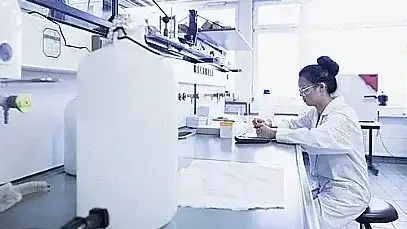Identifying Symptoms of Toxic Fatty Liver Disease

Recognizing the Early Signs of Toxic Fatty Liver Disease
Toxic fatty liver disease, also known as toxicant-associated fatty liver disease (TAFLD), is a condition in which liver fat accumulation is linked to exposure to environmental toxins, chemicals, or drugs. Identifying symptoms of toxic fatty liver disease is essential for early intervention and effective management. While many cases are asymptomatic in the early stages, progressive damage can lead to serious complications, including cirrhosis and liver failure.
How Toxic Fatty Liver Disease Develops
Understanding the Pathophysiology
Toxic fatty liver disease develops when the liver becomes overwhelmed by toxins, leading to fat buildup, inflammation, and oxidative stress. Common toxicants include industrial chemicals, medications like methotrexate, and environmental pollutants. These substances impair the liver's ability to metabolize fats and detoxify harmful agents, causing cellular injury and metabolic dysregulation.
Populations at Risk
Individuals exposed to high levels of industrial chemicals, such as workers in manufacturing, or those taking hepatotoxic medications are at increased risk. Additionally, people with pre-existing liver conditions or metabolic syndrome are more vulnerable to the adverse effects of toxicants.
Pathophysiology of Toxic Fatty Liver Disease
Industrial chemicals, medications, pollutants
Direct cellular damage
Lipid accumulation
Free radical damage
Immune response
Progressive liver damage
Early Symptoms of Toxic Fatty Liver Disease
Generalized Fatigue
Fatigue is one of the most commonly reported symptoms. It occurs due to impaired liver function, which affects energy production and toxin clearance.
Abdominal Discomfort
Patients may experience mild pain or discomfort in the upper right quadrant of the abdomen, corresponding to the location of the liver.
Unexplained Weight Changes
Unintentional weight loss or gain can occur as liver dysfunction disrupts metabolic processes and appetite regulation.
Nonspecific Symptoms
Other early indicators include:
- Loss of appetite
- Nausea or bloating
- Weakness
While these symptoms are nonspecific, their persistence warrants further investigation, especially in individuals with known toxicant exposure.
Progression and Advanced Symptoms
Jaundice
Yellowing of the skin and eyes, or jaundice, is a hallmark sign of liver dysfunction. It results from the buildup of bilirubin, a byproduct of red blood cell breakdown.
Ascites
Fluid accumulation in the abdomen, known as ascites, may develop as liver damage progresses and affects blood flow.
Edema
Swelling in the legs and ankles is another sign of advanced disease, often linked to reduced protein production by the liver.
Cognitive Impairment
Hepatic encephalopathy, characterized by confusion, forgetfulness, or difficulty concentrating, may occur as toxins accumulate in the bloodstream due to reduced liver function.
Diagnostic Approaches
Clinical Evaluation
Diagnosing toxic fatty liver disease begins with a thorough medical history and physical examination. Physicians will inquire about potential exposures to toxins, medications, and environmental pollutants.
Laboratory Tests
Key blood tests include:
- Liver Enzyme Tests: Elevated levels of alanine aminotransferase (ALT) and aspartate aminotransferase (AST) suggest liver injury.
- Bilirubin: High bilirubin levels indicate impaired bile metabolism.
- Albumin: Low albumin levels may reflect decreased liver protein production.
Imaging Studies
Ultrasound, CT scans, and MRI can detect fat accumulation and structural changes in the liver. FibroScan, a specialized ultrasound technique, assesses liver stiffness, which correlates with fibrosis.
Liver Biopsy
In some cases, a liver biopsy may be necessary to confirm the diagnosis and evaluate the extent of liver damage. This procedure involves microscopic examination of liver tissue.
Differentiating TAFLD from Other Liver Diseases
Toxic fatty liver disease shares symptoms with other forms of liver disease, such as non-alcoholic fatty liver disease (NAFLD) and alcoholic liver disease (ALD). The distinguishing factor for TAFLD is the clear association with toxicant exposure. Comprehensive evaluation of occupational and environmental factors is critical for accurate diagnosis.
Treatment and Management
Removing the Source of Toxic Exposure
Eliminating or reducing exposure to the offending toxicant is the cornerstone of treatment. This may involve lifestyle changes, such as using protective equipment at work or avoiding certain medications.
Nutritional Support
A liver-friendly diet rich in antioxidants and low in processed foods can support recovery. Key recommendations include:
- Increasing intake of leafy greens, nuts, and berries to combat oxidative stress
- Limiting saturated fats and refined sugars
- Ensuring adequate hydration
Pharmacological Interventions
Medications may be prescribed to address specific symptoms or underlying conditions. For instance:
- Antioxidant therapy, such as N-acetylcysteine, may reduce oxidative stress.
- Anti-inflammatory agents can mitigate liver inflammation.
Medical Interventions
- Liver Transplant: Reserved for cases of advanced liver failure unresponsive to other treatments.
To learn more about Liver Transplantation, click here.
Monitoring and Follow-Up
Regular follow-up with a healthcare provider is essential to monitor liver function and assess treatment efficacy. Routine imaging and blood tests are recommended to track disease progression.
Prevention Strategies
Workplace Safety
Employers and workers in industries with high toxicant exposure must adhere to safety protocols, including the use of personal protective equipment (PPE) and adequate ventilation systems.
Public Health Initiatives
Stronger regulations on industrial emissions and chemical use can reduce population-level exposure to hepatotoxic substances. Public awareness campaigns can educate individuals about potential risks.
Personal Measures
Individuals can minimize exposure by:
- Avoiding the use of harsh cleaning chemicals
- Consuming organic foods when possible
- Maintaining a healthy weight to reduce liver vulnerability
Research and Future Directions
Ongoing studies aim to improve the understanding of TAFLD and develop targeted therapies. Emerging research highlights the role of the gut-liver axis in mediating the effects of toxicants, suggesting that gut microbiota modulation may offer therapeutic potential. Additionally, advancements in biomarker development may enhance early detection and risk stratification.
Conclusion
Identifying symptoms of toxic fatty liver disease is critical for timely diagnosis and intervention. While early symptoms are often nonspecific, awareness of risk factors and a comprehensive diagnostic approach can aid in distinguishing TAFLD from other liver conditions. Through prevention, lifestyle modifications, and ongoing research, the burden of this condition can be reduced.
Share this article

Dr. Alinda Mae Gordola, MD
I am a board-certified internist and gastroenterologist specializing in the diagnosis and treatment of digestive system disorders. See Full Bio.
-
1. Smith JD, Johnson KL, et al. Modern Approaches to Toxic Liver Disease. Journal of Hepatology, 2023
-
2. Tilg H, Moschen AR. Mechanisms behind the link between environmental pollutants and NAFLD. Nature Reviews Gastroenterology & Hepatology, 2021.
-
3. Yamamoto H, Chen X, et al. Biomarkers in Toxic Fatty Liver Disease. Nature Reviews Gastroenterology & Hepatology, 2023
-
4. Anderson P, Liu Y, et al. Occupational Liver Disease: A Comprehensive Review. American Journal of Industrial Medicine, 2023
-
5. Zelber-Sagi S, et al. Nutritional strategies for environmental toxin mitigation in liver health. Journal of Hepatology, 2021.
-
6. Iser DM, Ryan M. Toxic effects of medications on the liver. Gastroenterology Clinics of North America, 2017.
How Industrial Chemicals Lead to Fatty Liver Industrial chemicals are an underappreciated yet significant factor contributing to the global rise in...
The Role of Protein Deficiency in Fatty Liver Disease Protein deficiency has a profound impact on the development and progression of fatty liver disease, particularly...
Fatty Liver Treatment Understanding Quiz Nonalcoholic fatty liver disease (NAFLD) is increasingly common, yet treatment options are often misunderstood.

You might enjoy more articles by
Dr. Alinda Mae Gordola, MD
 Disease
Disease Diets
Diets Recipes
Recipes Supplements
Supplements Management
Management Calculators
Calculators Quizzes
Quizzes Glossary
Glossary




